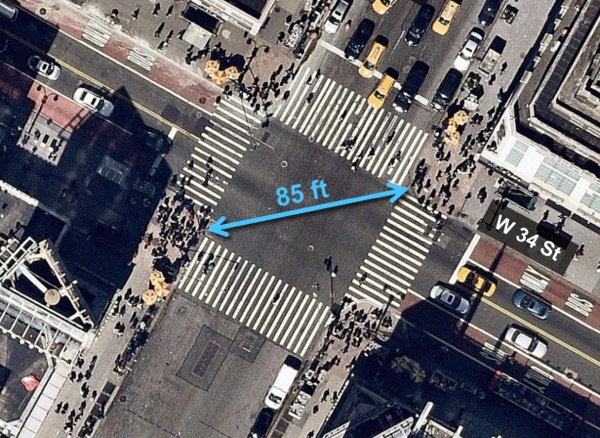DOT has released a report on the pros and cons of all-pedestrian signal phases -- popularly known as Barnes Dance crossings -- at city intersections. While Barnes Dance treatments can improve safety for people crossing the street, DOT prefers other safety treatments in most circumstances.
The report [PDF], which was prompted by the City Council, says all-way pedestrian signals work well in very specific conditions, including intersections with unusual layouts, crossings with diagonal desire paths, and intersections that are near transit hubs.
Depending on traffic patterns, Barnes Dances can delay buses and people on bikes, according to DOT, with cascading effects on nearby intersections. Longer pedestrian wait times can cause sidewalk crowding and lead to non-compliance with traffic signals, the report says, countering the benefit of reducing pedestrian-motorist conflicts.
The report cites a 2015 study of five Manhattan intersections, all near transit hubs and with high volumes of pedestrian traffic, which were candidates for all-pedestrian signals. At Seventh Avenue and W. 34th Street outside Penn Station, for example, DOT found that a Barnes Dance with a diagonal crossing would increase average wait times for all street users.
The report recommends leading pedestrian intervals, split-phase signals, and physical improvements like sidewalk extensions and pedestrian islands as other tools to protect people on foot from turning drivers.
There are currently 86 NYC intersections with all-pedestrian phases, according to DOT. The report says DOT will consider adding Barnes Dances at intersections with atypical geometry, intersections where most or all drivers make turns, T intersections, and intersections with low volumes of motorized traffic.






